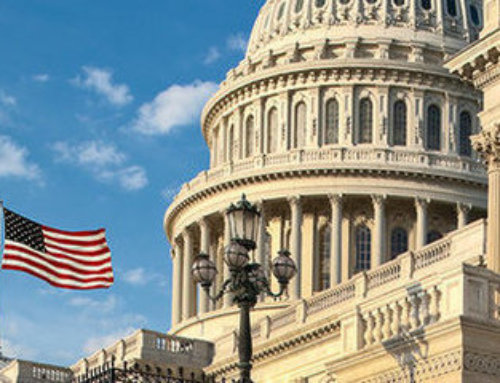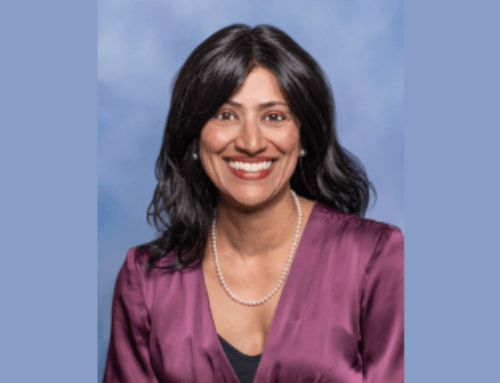The end of 2017 brings to a close an eventful year for the field of sleep medicine that included the introduction by the AASM of new clinical practice guidelines, position statements and papers; expedited accreditation; and a mobile app that directly connects patients to sleep medicine professionals and accredited sleep centers through the AASM SleepTM telemedicine system. Here is a selection of some of the top headlines and highlights from the past year:
1. March 15: AASM publishes new guideline for diagnostic testing for adult sleep apnea
A new clinical practice guideline from the AASM established clinical practice recommendations for the diagnosis of obstructive sleep apnea in adults. The guideline, which was published in the March 15 issue of the Journal of Clinical Sleep Medicine, describes the circumstances under which attended polysomnography in an accredited sleep center or a home sleep apnea test (HSAT) should be performed for suspected OSA.
2. Oct. 15: AASM releases new home sleep apnea test positions
The Oct. 15 issue of the Journal of Clinical Sleep Medicine included a new position statement and position paper from the AASM, along with an editorial, all of which examined the clinical role of HSAT in the practice of sleep medicine.
3. April 21: AASM now offering expedited accreditation to help sleep facilities comply with Medicare requirements
The AASM created a new program to expedite accreditation applications for sleep facilities impacted by recent changes to Medicare coverage policies for sleep studies. Noridian, CGS Administrators and Wisconsin Physicians Service all announced local coverage determination (LCD) policy changes that now require sleep-specific accreditation.
4. Feb. 15: New AASM clinical practice guideline provides recommendations for specific insomnia drugs
A new clinical practice guideline is the first from the AASM to provide comprehensive, evidence-based analyses of individual agents commonly used in the treatment of chronic insomnia disorder. The guideline, which was published in the Feb. 15 issue of the Journal of Clinical Sleep Medicine, provides recommendations to help clinicians choose a specific pharmacological agent for the treatment of chronic insomnia in adults, when such treatment is indicated.
5. July 24: New AASM SleepTM app connects patients with sleep specialists via mobile device
The AASM introduced the AASM SleepTM app, a mobile app that directly connects patients to sleep medicine professionals and accredited sleep centers through the AASM SleepTM telemedicine system. The app provides patients convenient access to sleep medicine services on their mobile devices.
AND
April 20: New AASM SleepTM Select video platform accelerates telemedicine integration
The AASM introduced AASM SleepTM Select, a streamlined telemedicine system that enables sleep medicine professionals, accredited sleep centers and durable medical equipment (DME) providers to rapidly improve patient access to care by integrating secure video visits.
6. Aug. 24: AASM urges FMCSA and FRA to address sleep apnea screening
While the AASM was disappointed in the decision by the Federal Motor Carrier Safety Administration (FMCSA) and the Federal Railroad Administration (FRA) to withdraw its advance notice of proposed rulemaking concerning obstructive sleep apnea, the AASM urged both agencies to take alternative steps to improve sleep apnea screening among individuals occupying safety sensitive positions in highway and rail transportation.
7. Dec. 1: 2018 Final Physician Fee Schedule
On Nov. 15, 2017, the Centers for Medicare & Medicaid Services (CMS) issued the 2018 Physician Fee Schedule (PFS) Final Rule, its annual rule finalizing payment policy and rates effective Jan. 1, 2018.
8. April 15: AASM publishes new school start times position statement
A new AASM position statement published in the April 15 issue of the Journal of Clinical Sleep Medicine asserts that the school day should begin at 8:30 a.m. or later for middle school and high school students. The AASM encourages primary academic institutions, school boards, parents, and policy makers to raise public awareness to promote a national standard of middle school and high school start times of 8:30 a.m. or later.
9. Feb. 1: AASM updates Standards for Accreditation to clarify diagnosis review requirement
The AASM made a minor update to the Standards for Accreditation to clarify that only diagnoses based upon the interpretation of a sleep study must be reviewed by an individual who is board-certified in sleep medicine (Standard F-8 of the Standards for Accreditation and Standard F-2 of the Independent Sleep Practice Standards for Accreditation). More substantial updates previously announced in 2016 emphasized safety, patient-centered care and long-term disease management.
10. April 1: Updated AASM Scoring Manual (v2.4) with new calibration rules to be released April 1
The AASM Manual for the Scoring of Sleep and Associated Events, Version 2.4, was released April 1, 2017. Updates included a new section in the Technical and Digital Specifications chapter (Section E) on performing calibrations to document appropriate system response. All digital subscribers received access to the new version when it went live on April 1. All AASM-accredited sleep facilities were required to implement the new rules in Version 2.4 by Oct. 1, 2017.





